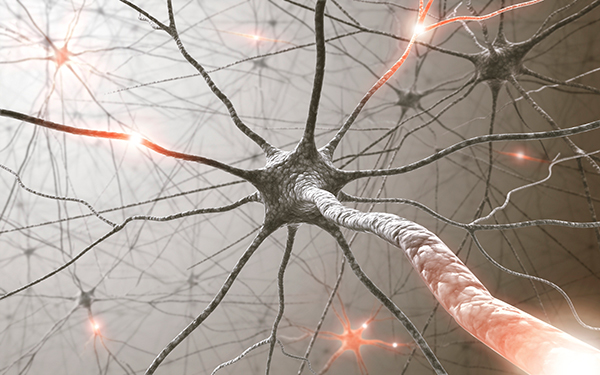The neuron is the basic working unit of the brain, and recent studies are beginning to reveal how neurons perform the complex computations that underlie our behavior. The latest study by the National Institutes of Health (NIH) demonstrates how some synapses find the energy to support neural communication thought to underlie learning and memory.
Their findings, “The cross-talk of energy sensing and mitochondrial anchoring sustains synaptic efficacy by maintaining presynaptic metabolism,” were published in Nature Metabolism and led by researchers in a lab headed by Zu-Hang Sheng, PhD, at the NIH’s National Institute of Neurological Disorders and Stroke (NINDS).
“Mitochondria supply ATP essential for synaptic transmission. Neurons face exceptional challenges in maintaining energy homeostasis at synapses. Regulation of mitochondrial trafficking and anchoring is critical for neurons to meet increased energy consumption during sustained synaptic activity. However, mechanisms recruiting and retaining presynaptic mitochondria in sensing synaptic ATP levels remain elusive. Here we reveal an energy signaling axis that controls presynaptic mitochondrial maintenance,” the researchers wrote.
The scientists investigated synapses that use the neurotransmitter glutamate to communicate. Glutamate is an important neurotransmitter present in over 90% of all brain synapses and is a naturally occurring molecule that nerve cells use to send signals to other cells in the central nervous system. Glutamate plays an essential role in normal brain functioning and its levels must be tightly regulated.
Sheng’s team previously showed that synaptic communication is an energy-demanding process and that mitochondria traveling along axons can control signals sent by boutons. Boutons that had mitochondria sent stronger and more consistent signals than those that were missing powerplants. The difference was due to higher energy levels produced by the mitochondria in the form of ATP.
In the current study, the team investigated what happens when boutons undergo intense communication thought to underlie learning and memory. Boutons are small swellings that are found at the terminal ends of axons. Synaptic boutons are typically the sites where synapses with other neurons are found, and neurotransmitters are stored here to communicate with other neurons via these synapses.
They found that this type of signaling quickly dropped energy levels at boutons. These changes triggered a series of chemical reactions controlled by AMP-activated protein kinases (AMPK), which ultimately led to the rapid recruitment of mitochondria to the boutons.

“Our study reveals a mechanistic cross-talk between energy sensing and mitochondria anchoring to maintain presynaptic metabolism, thus fine-tuning short-term synaptic plasticity and prolonged synaptic efficacy,” concluded the researchers.



